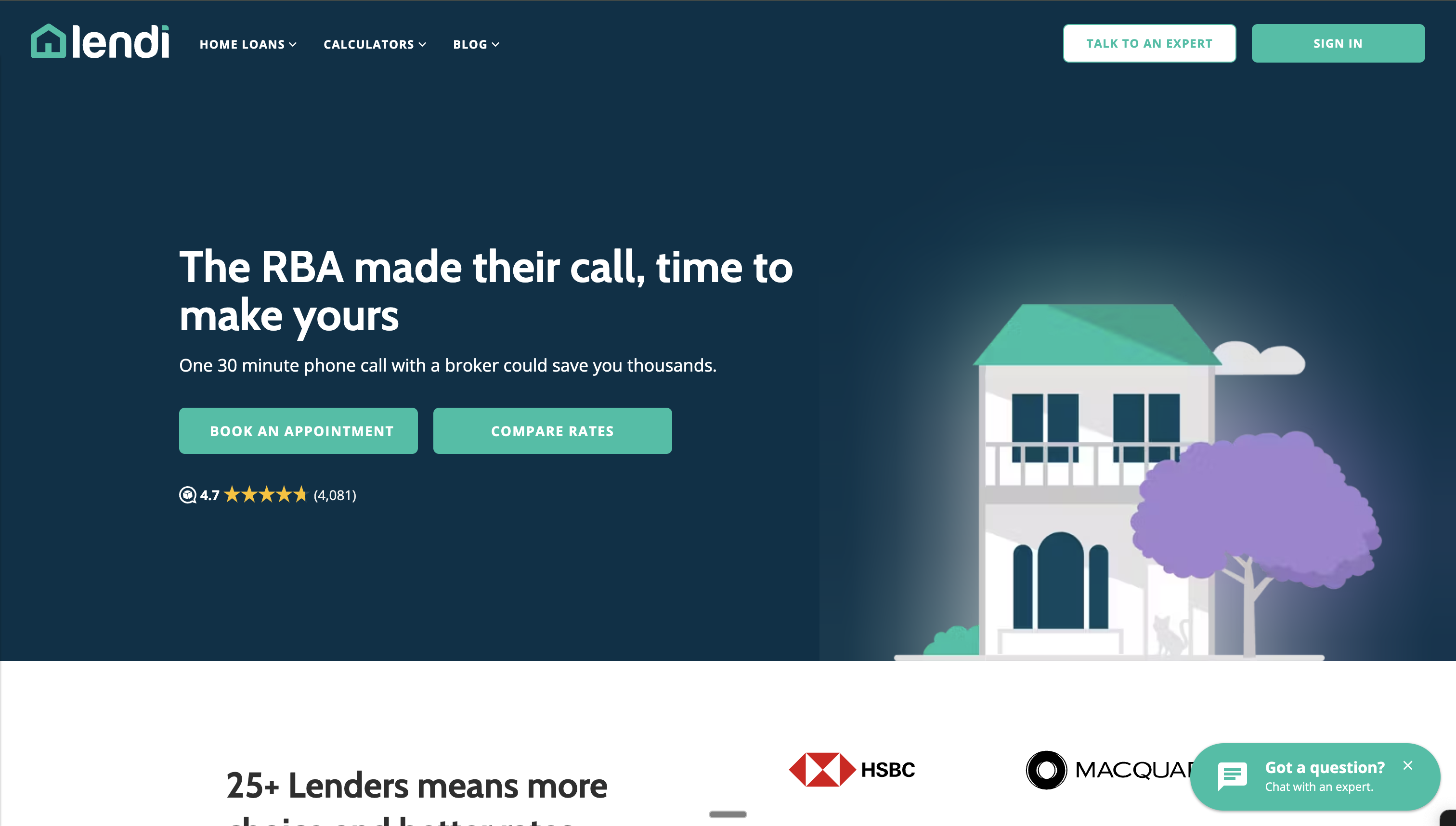Early-stage design iteration was a barrier on Lendi Group's journey to AI-enabled continuous deployment. With Magic Patterns, they've shortened their delivery cycle to 3 from 12 weeks, eliminated 3 days of meetings from every sprint, and started generating validated, interactive mockups 5x faster.
About Lendi Group
Lendi Group is Australia's leading property and mortgages platform, with a loan book over $105B. It operates Lendi, Australia's #1 digital mortgage brand, and the iconic Aussie franchise, with a network of 215 retail stores nationwide.
Lendi Group has attacked the clunky home loan journey with technology, service, and a challenger's imagination since day one. Today it supports Australians throughout their property journey – from finding the right property, to buying with confidence and owning on the best possible terms.
The challenge: Collaborative design at an AI-native speed
"Before Magic Patterns, design conversations felt slow and abstract: lots of words, decks, and hand-waving. Now, in just a few minutes, we can put a responsive prototype in front of our stakeholders that they can click and interact with."
To revolutionize the property journey, Lendi Group needed a modern, agile continuous deployment cycle. But before Magic Patterns, design and prototyping had become a bottleneck.
Lendi Group's collaborative, cross-functional product teams bring together designers, engineers, product managers and stakeholders including leadership. To bring ideas from concept to reality, everyone must sign off on ideas before they move into production.
Lendi Group's previous design tool served some stages of the process well. But it didn't lend itself to rapid, flexible ideation, which caused inefficiency at the prototyping stage.
-
Static designs: There's no way to see how interactive elements, like chatbots, forms, and menus, will behave on Lendi's actual site. If user testing was involved, designers had to manually build wireframes for every device customers might use.
-
Time-consuming: Designers would gather ideas during meetings, use them to inform prototypes, then meet again to gather feedback. Any revisions or suggestions would send designers back to the drawing board.
This process simply took too long. While Lendi Group did sometimes ship within days, their software delivery cycle could stretch as long as 12 weeks. That didn't fit with leadership's vision for Lendi as a modern, AI-native organization.
The goal: A dedicated AI tool for faster prototyping and user testing
"Magic Patterns democratises design ideation. More voices can contribute, and designers have tools to shape their ideas into testing-ready experiences faster. That combination drives speed, alignment, diversity of thought, and stronger customer outcomes."
As they prepared to launch Guardian, Australia's first agentic AI home loan and property experience, Lendi Group reached an inflection point. They knew that the right AI tools would let them ship faster, without sacrificing their collaborative, customer-centric process.
Creating interactive designs was the low-hanging fruit on this AI journey. A dedicated AI design tool would reduce meetings and tool switching, streamlining both design conversations and user testing.
Lendi Group experimented with a few AI design tools, but none were quite right for this specific use case. Engineers and developers were comfortable in these tools, but they weren't friendly to non-technical stakeholders. Because they weren't built specifically for prototyping, they didn't deliver a truly intuitive experience.
The solution: Magic Patterns accelerates the idea to production cycle
With Magic Patterns, designing is as easy as having a conversation. Magic Patterns is controlled with a chat-style interface, so any stakeholder, not just designers, can describe ideas in natural language and see how they could look near-instantly.
There's no more waiting for prototypes after the meeting, waiting again for feedback to be incorporated, then spending days or weeks in user testing. Prototyping now happens during design discussions, rather than as a separate phase taking days or weeks after every meeting:
-
During meetings, designers turn teammates' ideas into interactive prototypes, and iterate on them using feedback, on the fly.
-
Once product teams align on a prototype, designers get an interactive version in front of customers for testing in 24 hours.
-
The development phase has also accelerated, because product teams share the prototypes' code base with engineers to adapt and borrow from as they see fit.
Because Magic Patterns enables faster experimentation, Lendi Group's teams also find that it supports collaboration, creativity, and ultimately product quality.
"Within meetings, we now get five or six ideas deep, instead of running with the first one or two. That's where the truly innovative ideas that will set you apart, start to come out."
The result: "From three months to a single sprint"
"Instead of design being a bottleneck, it's now a catalyst. Magic Patterns lets us illustrate 'what's possible' at a strategic level, showing leaders and partners tangible futures we can rally around."
Guardian was the ultimate pilot for this new, AI-accelerated process. With Lendi's old processes, this product would have taken 4x longer to go from ideation to customers' hands.
Accelerated by Magic Patterns, Guardian launched in just 16 weeks, including end-to-end development, a full product website, and App Store launch.
Since adopting Magic Patterns, Lendi Group is experiencing unprecedented velocity:
- 3-4 week delivery cycles (from 12 weeks)
- 2-3 days in meetings eliminated from every sprint
- 1-2 days to validated prototypes (from 5-7)
Magic Patterns is only one component of Lendi Group's strategy to become AI-native. But enthusiasm and momentum for Magic Patterns is building.
Already, Lendi has upgraded from a month-to-month engagement with Magic Patterns to an annual contract with 35 seats and counting. As their use of Magic Patterns grows, Lendi expects to scale their compressed development cycle across all product teams.
